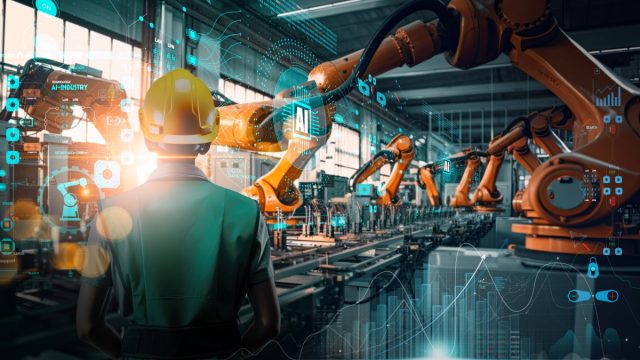In today’s rapidly evolving industrial landscape, staying ahead of the technological curve is no longer optional—it’s imperative. However, identifying the most impactful technologies can be challenging, as many innovations flood the market. This article cuts through the noise to spotlight three groundbreaking solutions revolutionizing the manufacturing sector. From artificial intelligence to quality inspection software for manufacturers, these technologies are not just improving efficiency—they’re completely redefining what’s possible on the factory floor.
Automation and Robotics Streamline Operations
Contents
In today’s manufacturing landscape, automation and robotics are revolutionizing production processes, enhancing efficiency, and reducing costs. These technological advancements are transforming manufacturers’ operations, allowing them to stay competitive in an increasingly global market.
Increased Productivity and Precision
Robotic systems can work tirelessly around the clock, performing repetitive tasks with unparalleled accuracy. This consistency boosts output and minimizes errors, leading to higher-quality products. Integrating quality inspection software for manufacturers into these automated systems further enhances precision, ensuring that every item meets stringent standards.
Enhanced Safety and Flexibility
Robots significantly improve workplace safety by taking on dangerous or physically demanding tasks. This shift allows human workers to focus on more complex, value-added activities. Moreover, modern robotics offer unprecedented flexibility, with easily reprogrammable systems adapting quickly to changing production needs.
Cost-Effective Operations
While the initial investment in automation can be substantial, the long-term benefits are clear. Reduced labor costs, increased production rates, and improved quality control contribute to a healthier bottom line. Quality inspection software is crucial in this cost-effectiveness, catching defects early and minimizing waste.
As manufacturers continue to embrace these technologies, the industry is poised for a new era of innovation and efficiency. Integrating automation, robotics, and advanced inspection software is not just a trend but a necessary evolution for modern manufacturing.
Big Data Analytics for Smarter Decision-Making
In today’s manufacturing landscape, big data analytics revolutionizes how companies operate and make decisions. By harnessing the power of vast amounts of data, manufacturers can gain unprecedented insights into their processes, leading to improved efficiency and product quality.
Enhancing Production Efficiency
Big data analytics allows manufacturers to identify bottlenecks and inefficiencies in their production lines. By analyzing real-time data from sensors and machines, companies can optimize their workflows, reduce downtime, and increase productivity. This data-driven approach enables manufacturers to make informed decisions about resource allocation and process improvements.
Predictive Maintenance
One of the most significant advantages of big data analytics is its ability to predict equipment failures before they occur. By analyzing historical data and real-time sensor information, manufacturers can schedule maintenance activities proactively, reducing unexpected downtime and extending the lifespan of their machinery. This predictive approach saves costs and ensures smoother operations and higher production reliability.
Industrial Internet of Things for Connected Factories
The Industrial Internet of Things (IIoT) revolutionizes manufacturing by creating smart, interconnected factories. This technology enables seamless communication between machines, systems, and people, increasing efficiency and productivity.
Real-Time Data and Analytics
IIoT sensors collect vast amounts of data from equipment and processes, providing real-time insights into operations. This constant stream of information allows manufacturers to:
- Optimize production schedules
- Predict maintenance needs
- Identify bottlenecks and inefficiencies
By leveraging this data, companies can make informed decisions quickly, reducing downtime and improving overall equipment effectiveness (OEE).
Enhanced Quality Control
IIoT technology integrates seamlessly with manufacturers’ inspection software, enabling more precise and consistent product quality. Advanced sensors and cameras can detect defects that might escape human inspection, ensuring higher standards and fewer recalls.
By embracing IIoT, manufacturers can create agile, data-driven operations that respond quickly to market demands while maintaining superior quality and safety standards.
Final Thoughts
As you’ve seen, robotics, IoT, and AI are revolutionizing manufacturing. By embracing these cutting-edge technologies, your company can boost efficiency, reduce costs, and gain a competitive edge. The key is strategically implementing solutions aligning with your specific needs and goals. By staying ahead of the curve and leveraging these transformative solutions, you’ll position your business for long-term success in an increasingly automated world. The time to act is now – don’t get left behind in the manufacturing revolution.


